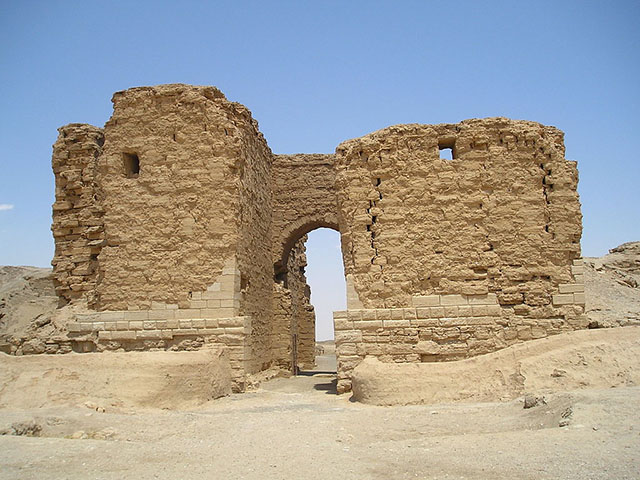Dura-Europos—modern-day Al-Salihiyah—is an important archaeological site located in the Syrian Desert near Deir ez-Zor. The city is home to the world’s oldest known house church, as well as some of the most exquisite frescoes ever discovered in a Jewish synagogue.
Originally a Babylonian settlement, Dura-Europos became part of the Achaemenid Persian Empire following the fall of Babylon to Cyrus the Great in 538 BCE. The city was later rebuilt by the Seleucids around 300 BCE and named Europos, after a city in Macedonia. In 165 CE, it was annexed by the Romans, who fortified it as a military outpost before it fell to the Sassanids in 256 CE and was subsequently destroyed.
Although the city’s political control shifted among the Babylonians, Seleucids, and Romans, the local culture remained deeply influenced by Syriac and Palmyrene traditions. The Seleucids saw Dura-Europos as a strategic alternative to Palmyra, transforming it into the first major Syrian stop along the Silk Road, which connected China to the Mediterranean via Homs and the Syrian coast. The Mediterranean, once considered a Syrian sea, was not merely a conduit for trade but a crossroads of ideas, inventions, religious thought, and cultural exchange, facilitated by Syrian sailors and merchants.
During the first three centuries of its development, Dura-Europos evolved into a vibrant cultural hub, where the civilizations of the ancient world converged. Its central location on the Silk Road made it a center for commerce, industry, and agriculture, as evidenced by its numerous administrative buildings surrounding a central marketplace, its expanded fortifications, and the presence of diverse temples and shrines throughout the city.
Strategically located in the heart of the Syrian Desert, Dura-Europos is surrounded by three plateaus and a valley, offering a naturally fortified position. To the west, it overlooks the open Syrian steppe extending toward Palmyra, with which it maintained strong commercial, cultural, and military ties. Like many ancient cities, Dura-Europos was enclosed by fortified walls with watchtowers. Its most intact entrance today is the Palmyra Gate, while a second gate once faced the Euphrates River but has largely eroded due to environmental exposure.
In its earliest days, Dura-Europos was not a major military center but rather a checkpoint guarded by a small garrison—likely affiliated with the administration of Palmyra—to secure caravan routes. The city spans roughly 1 km from north to south, and about 700 meters from the Euphrates to the desert wall, covering an area of nearly 50 hectares. Tombs were located west of the settlement, while service buildings and waste disposal areas lay outside the Palmyra Gate and city walls.
Most of the uncovered ruins within the city walls date to the Roman period, during which the city was heavily fortified and served as a key defensive stronghold on the empire’s eastern frontier.











